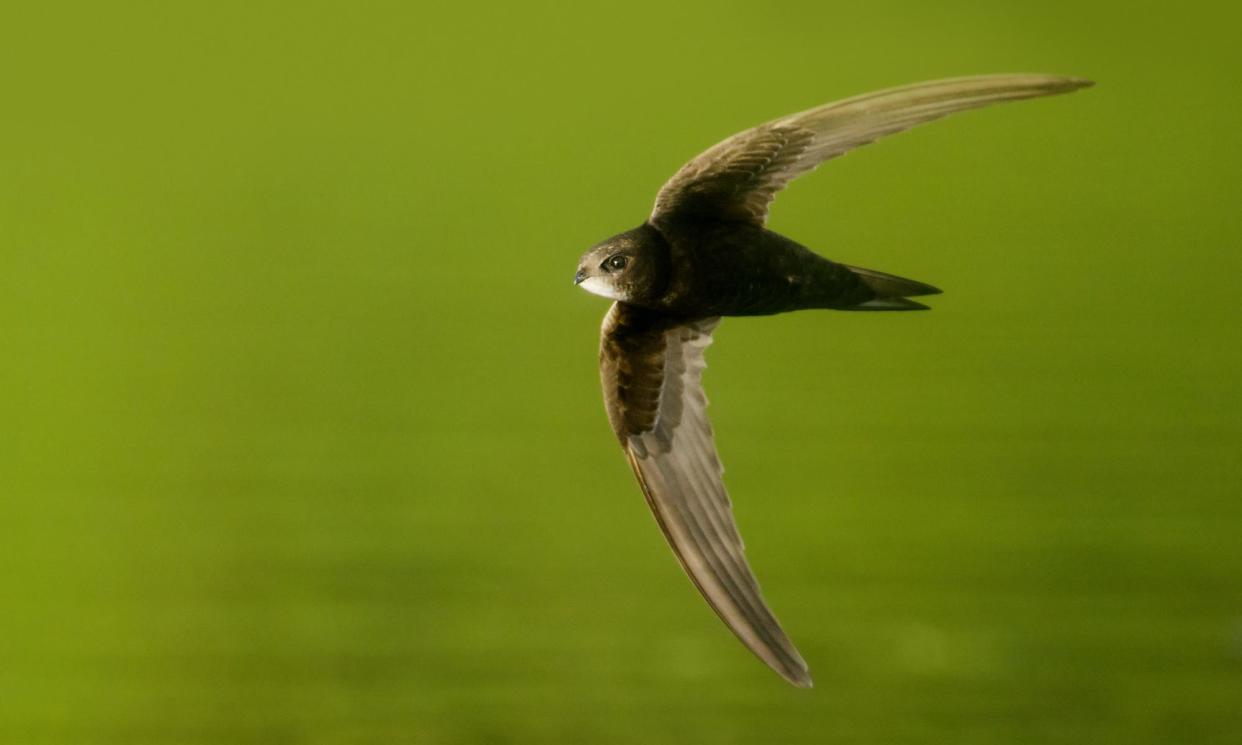Birdwatch: the invincible swift, effortless master of the air

May Day dawns cold and breezy, with sullen grey clouds promising rain. Hope seems very far away. But then, a distant dark streak scythes through the skies over the Avalon Marshes, stiff-winged, direct and determined. A single swift, my first of the year.
As I do every spring, I silently recite the words of the poet Ted Hughes: “They’ve made it again, which means the globe’s still working … ”
I’ve always loved swifts. They appear invincible, effortless masters of the air, exchanging Africa for Europe and back again. During the first half of my life, when I lived in London, they were a reassuring sign of the changing of the seasons. But now their world is under threat. Since my childhood they’ve been in steady decline, a fate shared with so many of our once-familiar migrant birds.
Fortunately, swifts have their human champions, none more prominent than the nature writer Hannah Bourne-Taylor. She tirelessly campaigns for a change in the law to install “swift bricks” in every new-build, so the birds have somewhere to nest. She and many others are fighting on many fronts, hoping they can turn around these birds’ fortunes before the globe really does stop working.
Later on in the day, the weather improves and we’re treated to hordes of swifts hawking low for invisible insects, while emitting that haunting, high-pitched scream that earned them the name “devil birds”. Next morning the rain returns, and they are nowhere to be seen.

 Yahoo News
Yahoo News 
